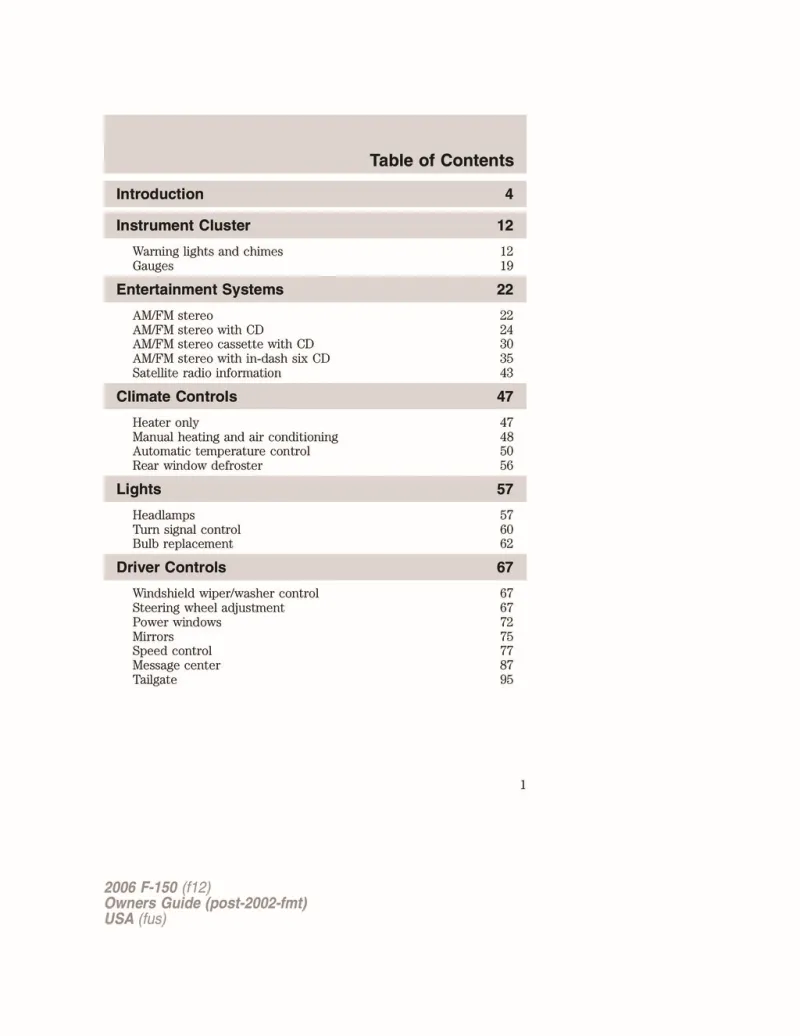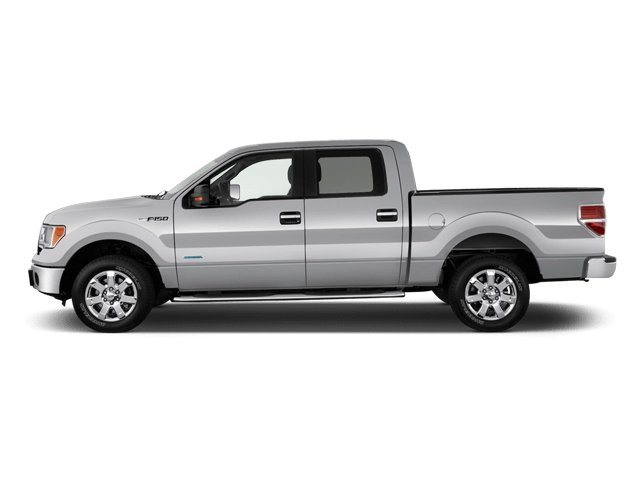2006 Ford F150 Owner's Manual

Table of Contents
2006 Ford F150 Overview
Introduction
The 2006 Ford F150 epitomizes the spirit of America’s best-selling truck, offering a robust combination of power, versatility, and comfort. Designed to meet the demands of both work and play, this iconic pickup combines stellar performance with advanced technology, making it a favorite among truck enthusiasts and everyday drivers alike. With a range of features tailored to various lifestyles, the F150 is ready to tackle any challenge that comes its way.
Powertrains
The 2006 Ford F150 offers a choice of three dynamic engines to suit diverse driving needs. The standard 4.2-liter V6 engine delivers a capable 202 horsepower, perfect for everyday tasks. For those seeking more power, an optional 4.6-liter V8 engine produces 248 horsepower, while the 5.4-liter V8 engine provides an impressive 300 horsepower. Each powertrain is mated to either a 4-speed automatic or an available 6-speed automatic transmission, allowing for smooth shifting and enhanced towing capabilities.
Trims
This versatile truck is available in an array of trims, including the base XL, the mid-level XLT, and the upscale Lariat. Each trim builds upon the last, with the XLT adding chrome accents and upgraded sound systems, while the Lariat introduces leather seating and advanced infotainment features. Whether you seek rugged utility or modern luxury, the 2006 F150 has a configuration to meet your specific requirements.
Features
Loaded with technology and convenience, the 2006 Ford F150 boasts features like an integrated audio system, optional satellite radio, and advanced safety options including side-impact airbags and antilock brakes. The spacious cabin can comfortably seat up to six, offering ample legroom and storage space, making it ideal for both work and family outings.
Owners Manual
The 2006 Ford F150 owner's manual serves as a comprehensive guide for new owners, detailing crucial information about vehicle operation, maintenance, and safety. This valuable resource includes troubleshooting tips, warranty details, and recommended service intervals to ensure the truck maintains peak performance throughout its lifecycle.
User manual download
The Ford F150 owner manual for the 2006 model year is to be found in PDF downloadable format on this page. The owner manual for the model year 2006 is free and in English, but the repair manuals are usually not easy to get and may cost more.
Manual Questions
Fill the form below and someone will help you!

